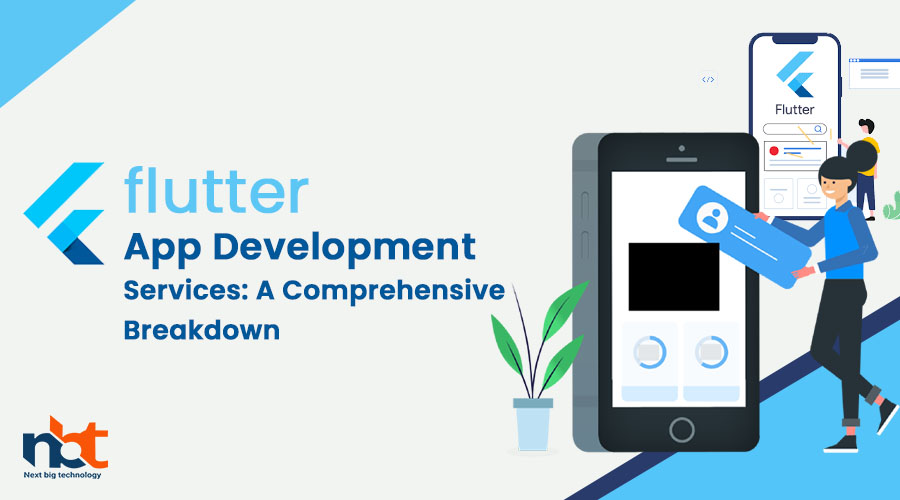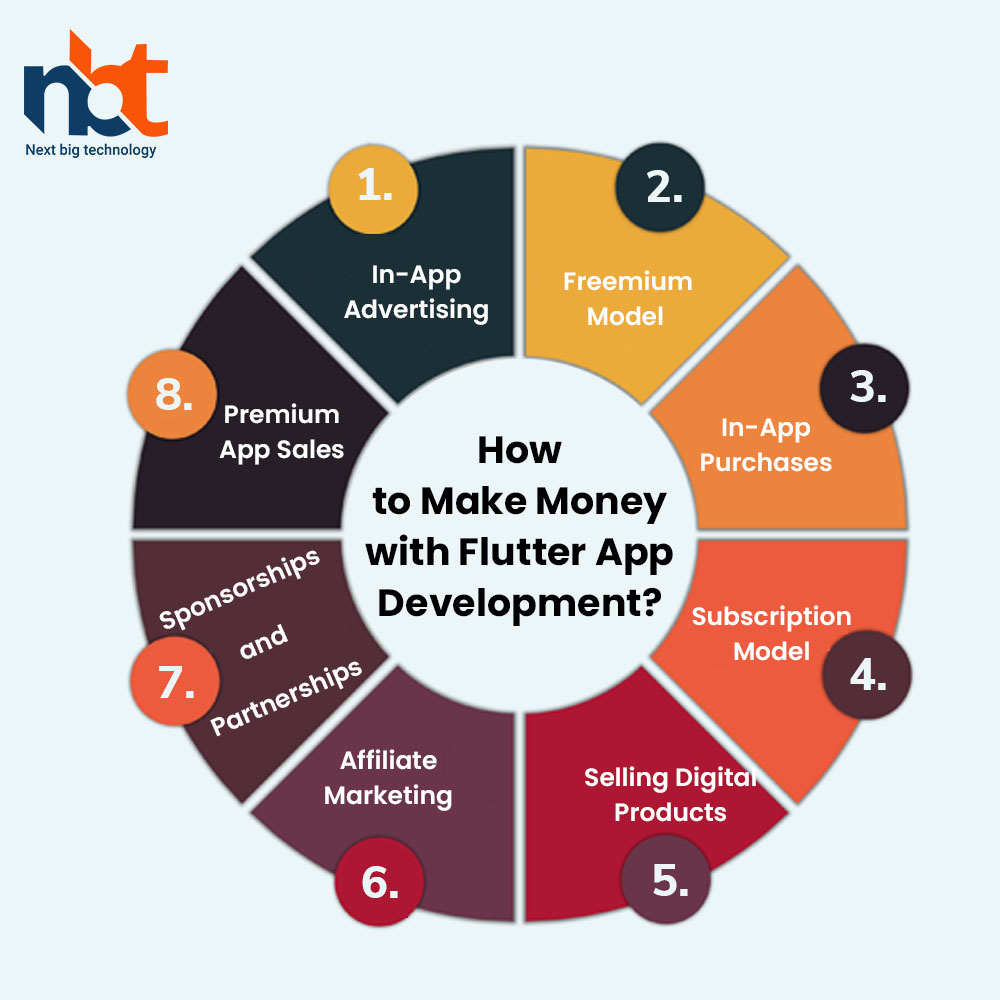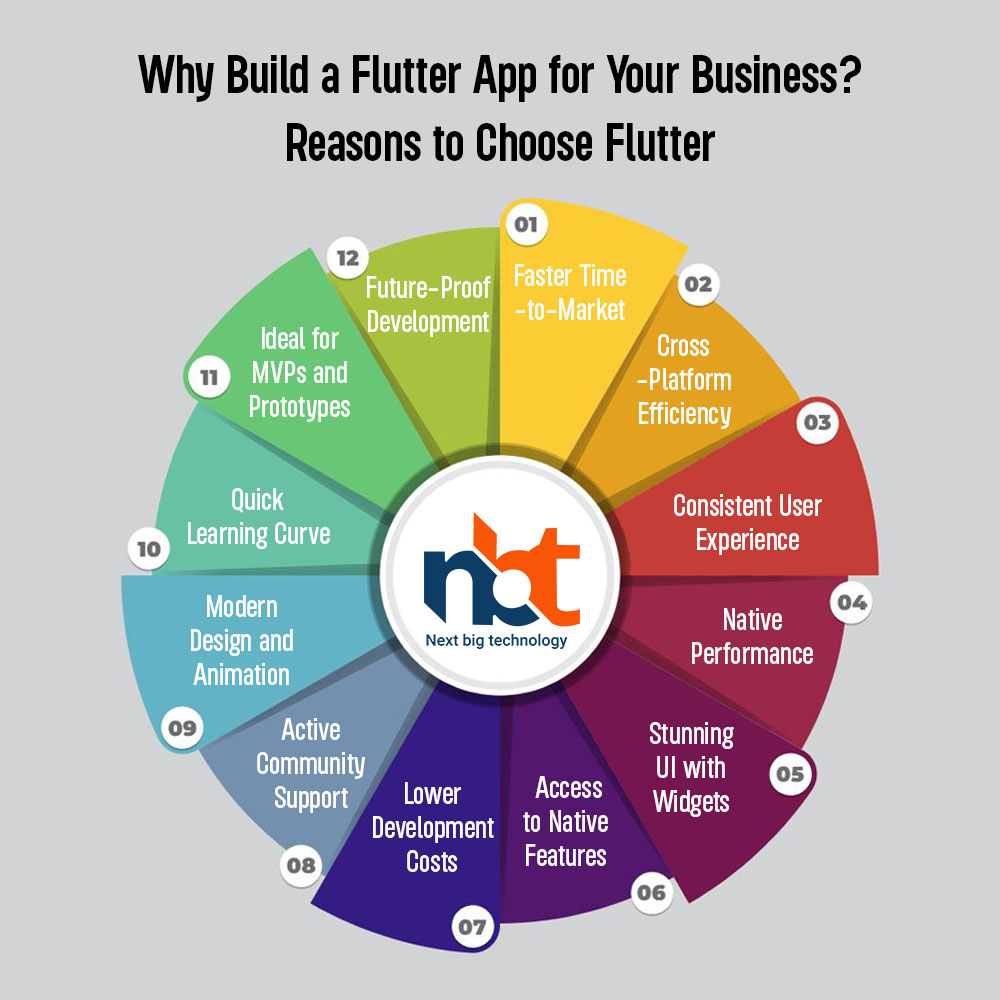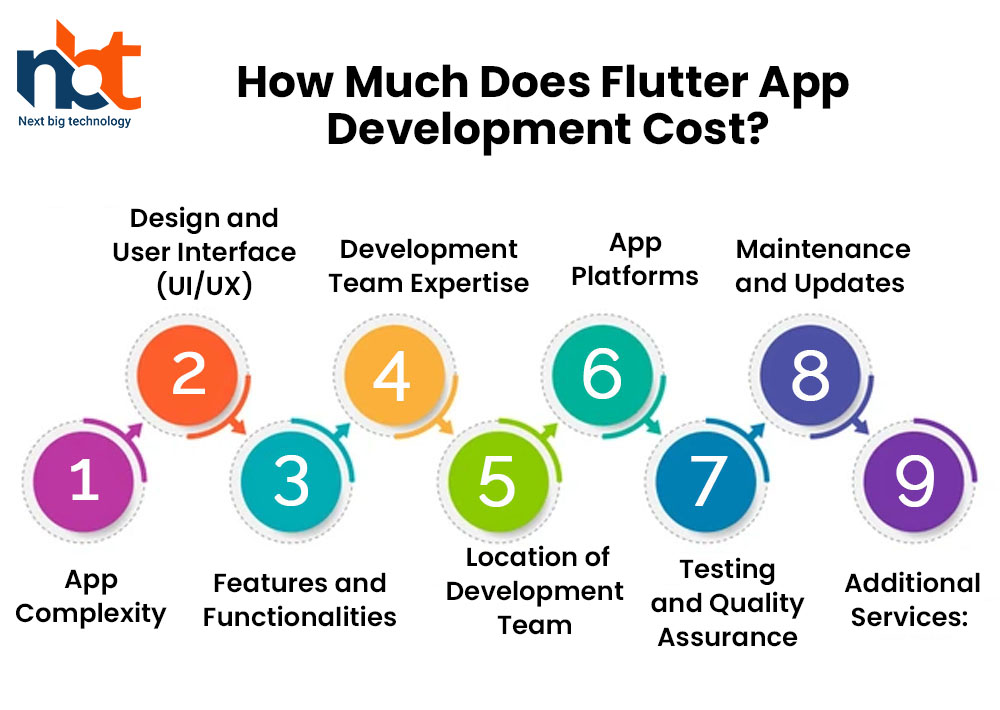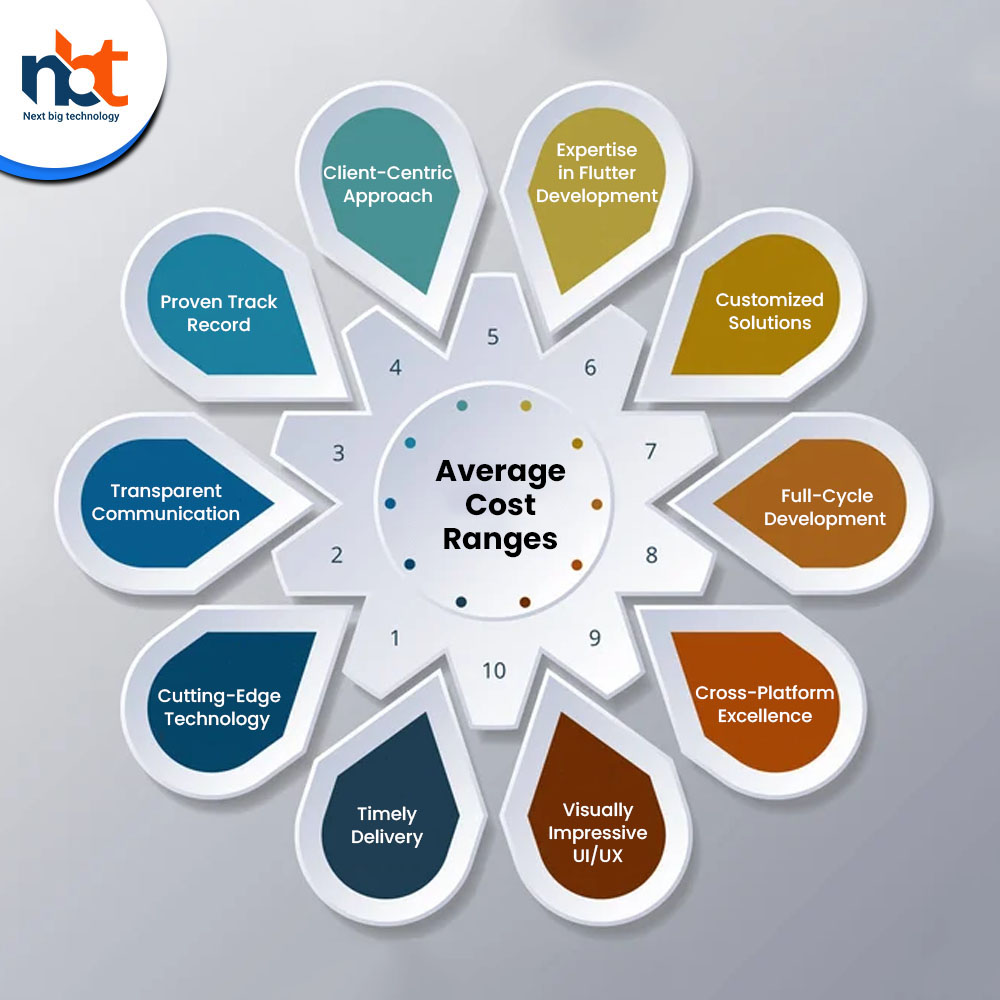Table of Contents
Introduction
Flutter, Google’s open-source UI toolkit, has gained immense popularity for its ability to create visually stunning and highly functional apps. If you’re interested in creating a Flutter app and exploring avenues to generate revenue, you’re in the right place. In this informative guide, we’ll walk you through the process of creating a Flutter app and share effective strategies to monetize your creation.
Creating a Flutter App: Step-by-Step Guide
- Idea Generation: Start with a unique app idea that solves a specific problem or fulfills a need. Research your target audience, identify their pain points, and brainstorm features that could address those challenges.
- Market Research: Analyze the competition and identify gaps in the market. Understand what existing apps lack and how your app can stand out.
- Wireframing and Design: Create a wireframe or prototype of your app’s user interface (UI). Flutter’s rich collection of widgets allows you to design visually appealing UI elements.
- Development: Begin coding your app using Dart programming language and the Flutter framework. Leverage Flutter’s hot reload feature to see instant changes as you code.
- Testing: Rigorous testing is crucial to ensure your app functions as intended. Test for bugs, user interface glitches, and overall user experience.
- Optimization: Optimize your app for performance, making sure it runs smoothly and efficiently on various devices.
- Publishing: Publish your app to app stores (Google Play Store and Apple App Store). Ensure your app’s metadata, screenshots, and descriptions are compelling to attract users.
Monetization Strategies for Your Flutter App
- In-App Advertising: Display ads within your app and earn revenue based on clicks or impressions. You can use ad networks like Google AdMob to integrate ads seamlessly.
- Freemium Model: Offer a free version of your app with limited features and provide a premium version with enhanced features for a price.
- In-App Purchases: Allow users to buy virtual goods, premium content, or additional features within the app. This works well for gaming and entertainment apps.
- Subscription Model: Provide valuable content or services on a subscription basis, generating recurring revenue. This model is common for news, fitness, and productivity apps.
- Selling Digital Products: If your app offers digital products like ebooks, courses, or templates, you can sell them directly through your app.
- Affiliate Marketing: Partner with other businesses and promote their products or services within your app. Earn a commission for each sale generated through your app.
- Sponsorships and Partnerships: Collaborate with brands or companies for sponsored content or special offers within your app.
Estimating the Flutter App Development Cost
The cost of developing a Flutter app can vary widely based on factors such as complexity, features, design, and location of development. On average, a basic Flutter app could start at around $15,000 to $25,000. However, more complex apps with advanced features could range from $25,000 to $50,000 or more.
It’s important to consider ongoing costs such as maintenance, updates, and marketing when budgeting for your app.
Facts About Flutter App Development
Flutter, the innovative open-source UI toolkit by Google, has transformed the app development landscape. Here are some intriguing facts about Flutter app development that highlight its significance and impact:
- Single Codebase, Multiple Platforms: One of the most significant advantages of Flutter is its ability to create apps for both iOS and Android using a single codebase. This not only saves time but also ensures consistency in user experience across platforms.
- Hot Reload Magic: Flutter’s hot reload feature allows developers to instantly see the effects of code changes in real-time. This rapid development cycle significantly speeds up the debugging and iteration process.
- Widgets Galore: Flutter’s widget-based architecture empowers developers to create complex and customizable UI elements. Widgets can be easily combined and customized to achieve the desired visual and interactive experience.
- Expressive UI: Flutter offers an array of pre-designed widgets that can be adapted to create visually stunning user interfaces. Its customizability allows for unique and creative app designs.
- Dart Language: Flutter uses the Dart programming language, known for its fast performance and modern syntax. While Dart might be new to some developers, its learning curve is relatively smooth.
- Flutter’s Growing Community: The Flutter community has been rapidly expanding, with developers from around the world contributing plugins, packages, and solutions. This active community support ensures a wealth of resources for developers.
- Favored by Startups and Enterprises: Flutter’s efficiency and cross-platform capabilities make it an attractive choice for both startups and enterprises. It’s a cost-effective solution for building high-quality apps.
- Pixel-Perfect Design: Flutter ensures that your app’s design is consistent across devices and screen sizes, leading to a pixel-perfect user experience.
- Performance-First Approach: Flutter’s architecture prioritizes performance, resulting in apps that are smooth, responsive, and performant even with complex animations.
- Growing List of Success Stories: Many popular apps have been built using Flutter, including Google Ads, Alibaba, Reflectly, and more. This showcases the versatility and potential of the framework.
- Desktop and Web Capabilities: Flutter isn’t limited to mobile. It’s expanding to support desktop and web applications, further broadening its applicability and reach.
- Open-Source Ecosystem: Being open-source, Flutter encourages collaboration, innovation, and continuous improvement, making it a dynamic ecosystem to be a part of.
As Flutter continues to evolve, these facts underscore its significance in the app development world, making it an appealing choice for developers aiming to create exceptional cross-platform applications.
How to Make Money with Flutter App Development?
Flutter app development not only empowers you to create stunning cross-platform applications but also offers various monetization strategies to turn your creative efforts into a profitable venture. Here’s a closer look at effective ways to generate revenue from your Flutter app:
1. In-App Advertising:
- What is it: Display ads within your app’s interface, and earn money based on user interactions (clicks) or impressions (views).
- How to Implement: Integrate ad networks like Google AdMob into your Flutter app. Customize ad placements and formats to maintain a seamless user experience.
- Best for: Apps with a large user base and frequent engagement.
2. Freemium Model:
- What is it: Offer a free version of your app with basic features and functionalities. Charge users to unlock premium features or access an ad-free experience.
- How to Implement: Segment features into free and premium tiers. Allow users to upgrade via in-app purchases.
- Best for: Apps with a clear distinction between essential and advanced features.
3. In-App Purchases:
- What is it: Offer users the option to buy virtual goods, items, or additional content within the app.
- How to Implement: Identify items or content that enhance user experience. Integrate secure payment gateways for seamless transactions.
- Best for: Gaming apps, productivity tools, and apps with virtual goods.
4. Subscription Model:
- What is it: Provide users with valuable content or services on a subscription basis, generating recurring revenue.
- How to Implement: Offer tiered subscription plans with varying levels of access. Provide exclusive content to incentivize subscriptions.
- Best for: News apps, fitness apps, educational platforms, and content-driven apps.
5. Selling Digital Products:
- What is it: If your app offers digital products such as e-books, courses, templates, or other digital goods, you can sell them directly within the app.
- How to Implement: Set up a secure payment gateway and a user-friendly interface for purchasing digital products.
- Best for: Apps focused on education, content creation, or creative tools.
6. Affiliate Marketing:
- What is it: Partner with brands or companies to promote their products or services within your app. Earn a commission for each sale generated through your app.
- How to Implement: Choose affiliate partners relevant to your app’s niche. Integrate affiliate links or banners within the app’s content.
- Best for: Apps with a niche audience that aligns with specific products or services.
7. Sponsorships and Partnerships:
- What is it: Collaborate with brands for sponsored content or special offers within your app. Brands pay you to promote their products to your users.
- How to Implement: Establish partnerships with brands that resonate with your app’s audience. Design engaging promotional campaigns.
- Best for: Apps with a loyal user base and a strong online presence.
8. Premium App Sales:
- What is it: Offer your app as a paid download upfront, without relying on in-app purchases or ads.
- How to Implement: Set an appropriate price point based on your app’s features and value proposition. Promote your app’s unique selling points.
- Best for: Apps with distinctive functionalities or niche appeal.
Monetizing your Flutter app requires a strategic approach that aligns with your app’s purpose, user base, and value proposition. By selecting the right monetization strategy and providing users with genuine value, you can create a sustainable source of income while delivering a positive user experience. Remember that user satisfaction remains crucial; the most successful monetization strategies enhance rather than hinder the app’s utility and enjoyment.
Top Characteristics of Flutter That Motivate to Create a Flutter App from Scratch
Flutter, the dynamic UI toolkit by Google, offers a range of compelling characteristics that inspire developers to embark on the journey of creating apps from scratch. These characteristics not only streamline the development process but also elevate the quality and performance of the final product. Let’s delve into the top features that motivate developers to choose Flutter for building apps:
1. Fast Development with Hot Reload:
- Flutter’s renowned “hot reload” feature allows developers to see instant changes in the app’s user interface as they modify the code. This rapid iteration process significantly speeds up development and debugging.
2. Cross-Platform Capabilities:
- Flutter enables developers to create apps for both iOS and Android platforms using a single codebase. This eliminates the need to write separate code for each platform, saving time and effort.
3. Expressive and Customizable UI:
- Flutter’s widget-based architecture empowers developers to create intricate and visually appealing user interfaces. Widgets can be customized and combined to achieve unique design elements.
4. Consistent Design Across Platforms:
- Flutter ensures that the design and layout of the app remain consistent across different devices and screen sizes. This uniformity enhances the user experience and maintains brand identity.
5. Native Performance and Look:
- Flutter apps are compiled to native ARM code, resulting in near-native performance. Additionally, Flutter’s widgets are designed to look and feel like native components, providing an authentic user experience.
6. Active and Supportive Community:
- Flutter boasts a rapidly growing and enthusiastic community of developers, offering support, tutorials, and a wealth of third-party packages and plugins to enhance app development.
7. Pre-Designed Widgets and Themes:
- Flutter includes a comprehensive library of pre-designed widgets and themes that expedite the UI development process. This allows developers to focus more on app logic and functionality.
8. Access to Native Features:
- Flutter offers access to native device features through platform channels. This enables developers to integrate native functionalities seamlessly into their apps.
9. Smoother Animations and Transitions:
- Flutter’s built-in animation support allows developers to create smooth and intricate animations and transitions, enhancing the overall user experience.
10. Strong Backing by Google:
- As an open-source project backed by Google, Flutter benefits from ongoing innovation, updates, and resources. Google’s commitment ensures the framework’s continued growth and improvement.
11. Versatility for All Types of Apps:
- Flutter is suitable for a wide range of applications, from simple apps to complex enterprise solutions, ensuring its applicability to various development projects.
12. Quick Learning Curve:
- Flutter’s relatively simple and intuitive syntax, coupled with its clear documentation, reduces the learning curve for developers new to the framework.
The exceptional characteristics of Flutter provide developers with a compelling reason to embark on the journey of creating apps from scratch. The framework’s combination of fast development, cross-platform capabilities, expressive UI, and native performance makes it an ideal choice for both beginners and experienced developers looking to deliver high-quality and visually impressive apps across iOS and Android platforms.
Why Build a Flutter App for Your Business? Reasons to Choose Flutter
In the fast-paced world of mobile app development, choosing the right framework is crucial for the success of your business app. Flutter, Google’s open-source UI toolkit, has emerged as a preferred choice for many businesses looking to create impactful apps. Let’s explore the compelling reasons why you should consider building a Flutter app for your business:
1. Faster Time-to-Market:
- Flutter’s “hot reload” feature allows developers to make real-time changes to the code and see the effects instantly. This rapid development cycle accelerates the time it takes to build and launch your app, giving you a competitive edge.
2. Cross-Platform Efficiency:
- Flutter enables you to create a single codebase that works seamlessly on both iOS and Android platforms. This eliminates the need to maintain separate codebases, saving time, effort, and resources.
3. Consistent User Experience:
- Flutter’s widgets offer a consistent look and feel across platforms, ensuring a uniform user experience. This consistency enhances your brand identity and user satisfaction.
4. Native Performance:
- Flutter apps are compiled to native ARM code, resulting in high performance that rivals native apps. Your users will enjoy fast load times and smooth interactions.
5. Stunning UI with Widgets:
- Flutter’s extensive library of pre-designed widgets and customizable themes allows you to create visually appealing and interactive user interfaces. This enhances user engagement and retention.
6. Access to Native Features:
- Flutter’s platform channels provide direct access to native features like camera, geolocation, and sensors. You can seamlessly integrate these functionalities into your app.
7. Lower Development Costs:
- Flutter’s single codebase reduces development efforts and costs compared to maintaining separate teams for iOS and Android development.
8. Active Community Support:
- Flutter has a vibrant and growing community of developers who contribute to the ecosystem with packages, plugins, and solutions. This ensures you have access to resources and solutions for any challenges you may encounter.
9. Modern Design and Animation:
- Flutter’s built-in support for animations and transitions enables you to create modern and engaging user experiences that captivate your audience.
10. Quick Learning Curve:
- Flutter’s simple and intuitive language, Dart, coupled with its clear documentation, makes it accessible to both novice and experienced developers.
11. Ideal for MVPs and Prototypes:
- Flutter’s speed and efficiency make it a perfect choice for building Minimum Viable Products (MVPs) or prototypes, allowing you to test your app idea quickly and gather feedback.
12. Future-Proof Development:
- Flutter’s growing popularity and Google’s backing ensure a vibrant future for the framework, with continuous updates and enhancements.
Choosing Flutter for your business app development can provide a range of benefits, from faster development to outstanding performance and cross-platform compatibility. The framework’s features make it an appealing choice for businesses aiming to create high-quality, visually appealing apps that cater to a broad audience and streamline development efforts.
How Much Does Flutter App Development Cost?
The cost of Flutter app development can vary widely based on a variety of factors, including app complexity, features, design, development team rates, location, and more. While providing an exact cost is challenging without specific project details, we can offer you a general overview of the cost considerations involved in Flutter app development:
1. App Complexity:
- Basic Apps: Simple apps with a few core features will have a lower development cost.
- Medium Complexity Apps: Apps with moderate features and functionalities will be priced higher due to more development effort.
- Complex Apps: Apps with advanced features, custom animations, and complex functionalities will have the highest development cost.
2. Design and User Interface (UI/UX):
- The complexity of the app’s design directly impacts the cost. Highly customized and intricate designs may require more time and effort from designers and developers.
3. Features and Functionalities:
- The number and complexity of features you want to implement in your app will significantly affect the development cost. Basic features like user authentication are different from features like real-time chat or complex algorithms.
4. Development Team Expertise:
- Hiring experienced developers and designers will generally increase the hourly rates, affecting the overall cost. However, their expertise can result in a higher quality app.
5. Location of Development Team:
- Development rates vary based on the geographical location of the development team. Rates are generally higher in countries with higher living costs.
6. App Platforms:
- Developing for both iOS and Android will cost more than developing for a single platform.
7. Testing and Quality Assurance:
- Rigorous testing is essential to ensure the app is bug-free and functions smoothly. The more testing required, the higher the cost.
8. Maintenance and Updates:
- Consider ongoing maintenance costs to keep your app updated with the latest platform requirements and to address any issues that arise post-launch.
9. Additional Services:
- App deployment, server costs, backend development, and third-party integrations can add to the overall cost.
Average Cost Ranges:
- Basic Apps: $15,000 – $25,000
- Medium Complexity Apps: $25,000 – $50,000
- Complex Apps: $50,000 and above
It’s important to note that these figures are approximate and can vary based on your unique project requirements. To get an accurate cost estimate, consider discussing your app idea with several development agencies or freelancers, providing them with detailed specifications. This will help you make an informed decision and budget accordingly for your Flutter app development.
Next Big Technology: Your Trusted Flutter App Development Company
In the ever-evolving landscape of mobile app development, choosing the right partner to bring your ideas to life is essential. Next Big Technology, a leading software development company, stands out as a reliable and proficient player in the world of Flutter app development. Here’s why we are the go-to choice for businesses seeking top-notch Flutter app solutions:
1. Expertise in Flutter Development:
- Our experienced team of Flutter developers possesses in-depth knowledge of the framework, enabling us to create robust, feature-rich, and visually stunning apps that cater to diverse industries and niches.
2. Customized Solutions:
- We understand that each project is unique. Our Flutter app development process is tailored to your specific requirements, ensuring that your app aligns perfectly with your vision and goals.
3. Full-Cycle Development:
- From ideation and design to development, testing, and deployment, we offer end-to-end Flutter app development services, simplifying the journey from concept to market-ready application.
4. Cross-Platform Excellence:
- Flutter’s cross-platform capabilities allow us to create apps that run seamlessly on iOS and Android. This not only saves time but also ensures a consistent user experience across devices.
5. Visually Impressive UI/UX:
- Our design team excels in creating captivating user interfaces that engage users and enhance their overall app experience, maximizing user retention and satisfaction.
6. Timely Delivery:
- We understand the importance of meeting deadlines. Our efficient development process ensures that your Flutter app is delivered on time, allowing you to seize market opportunities.
7. Cutting-Edge Technology:
- Next Big Technology stays updated with the latest trends and technologies in the app development space. This ensures that your Flutter app is built using the most advanced tools and methodologies.
8. Transparent Communication:
- We value clear and open communication with our clients. Regular updates, progress reports, and discussions ensure that you are always in the loop about your project’s status.
9. Proven Track Record:
- Our portfolio includes a diverse range of successful Flutter app projects for businesses across various industries. This track record demonstrates our ability to deliver high-quality solutions.
10. Client-Centric Approach:
- Your satisfaction is our top priority. We work closely with you to understand your goals, needs, and preferences, ensuring that the final product exceeds your expectations.
Whether you’re a startup looking to make a mark or an established enterprise seeking to revamp your digital presence, Next Big Technology is the Flutter app development company that can turn your vision into reality. With a perfect blend of expertise, creativity, and dedication, we are committed to creating Flutter apps that resonate with your target audience and drive your business forward.
FAQs: Flutter Mobile App Development
1. What is Flutter?
- Flutter is an open-source UI toolkit developed by Google for creating natively compiled applications for mobile, web, and desktop from a single codebase.
2. Is Flutter good for mobile app development?
- Yes, Flutter is excellent for mobile app development. Its cross-platform capabilities, fast development with hot reload, and native performance make it a popular choice among developers.
3. What programming language does Flutter use?
- Flutter uses the Dart programming language. Dart is designed for building fast, robust, and maintainable apps.
4. Can I create iOS and Android apps with Flutter?
- Yes, Flutter allows you to create apps for both iOS and Android platforms using a single codebase, which is one of its standout features.
5. What is “hot reload” in Flutter?
- “Hot reload” is a feature in Flutter that allows developers to make code changes and see the results in the app immediately, without restarting the app or losing its state.
6. Is Flutter better than other mobile app development frameworks?
- Each framework has its strengths. Flutter’s advantages include cross-platform capabilities, expressive UI, native performance, and a growing community, making it a strong contender.
7. Can I use Flutter for web and desktop app development?
- Yes, Flutter is evolving to support web and desktop applications, allowing developers to create consistent experiences across different platforms.
8. How do I choose between native and Flutter app development?
- Consider factors like development time, budget, target audience, and app complexity. If you need a fast, cross-platform solution, Flutter can be a great choice.
9. What are “widgets” in Flutter?
- Widgets are the building blocks of a Flutter app’s user interface. They are reusable UI elements that define what the user sees and how they interact with the app.
10. How much does it cost to develop a Flutter app?
- The cost varies based on factors like app complexity, features, design, and development rates. A basic app can start at around $15,000, while more complex apps can range higher.
11. Is Flutter suitable for startups?
- Yes, Flutter’s efficiency, cross-platform capabilities, and faster development time make it an ideal choice for startups looking to build and launch their apps quickly.
12. Can I update my existing native app to Flutter?
- While it’s possible to migrate parts of an app to Flutter, a complete migration would involve rewriting the app from scratch due to the differences in architecture.
13. How secure is Flutter for app development?
- Flutter itself is secure, but app security depends on how well you implement security practices during development, including secure coding and regular updates.
14. What kind of apps can be developed using Flutter?
- Flutter can be used to develop a wide range of apps, including social media apps, e-commerce apps, educational apps, productivity tools, and more.
15. Is Flutter future-proof?
- Flutter’s strong backing by Google, active community, and continuous updates indicate a promising future for the framework, making it a reliable choice for long-term projects.
Conclusion
Creating a Flutter app and generating revenue from it is an exciting journey that requires careful planning, creativity, and strategic thinking. By following the development process and implementing effective monetization strategies, you can create a successful Flutter app that not only provides value to users but also brings financial rewards. Remember that the key to success lies in offering a unique and valuable solution that resonates with your target audience.
Thanks for reading our post “Creating a Profitable Flutter App: Development Process and Monetization Strategies”. Please connect with us to know more about Flutter App Development.




